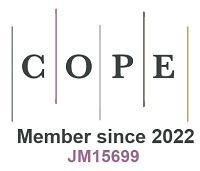REFERENCES
1. Ji G, Zhao Y, Liu Z. Design of porous organic polymer catalysts for transformation of carbon dioxide. Green Chem Eng. 2022;3:96-110.
2. Truong CC, Mishra DK. Catalyst-free fixation of carbon dioxide into value-added chemicals: a review. Environ Chem Lett. 2021;19:911-40.
3. Cheng Y, Ding X, Han B. Porous organic polymers for photocatalytic carbon dioxide reduction. ChemPhotoChem. 2021;5:406-17.
4. Zhang XY, Wang P, Zhang Y, Cheng XM, Sun WY. Facet-dependent photocatalytic behavior of Fe-soc-MOF for carbon dioxide reduction. ACS Appl Mater Interfaces. 2023;15:3348-56.
5. Steinlechner C, Junge H. Renewable methane generation from carbon dioxide and sunlight. Angew Chem Int Ed Engl. 2018;57:44-5.
6. Liao X, Wang Z, Kong L, et al. Synergistic catalysis of hypercrosslinked ionic polymers with multi-ionic sites for conversion of CO2 to cyclic carbonates. Mol Catal. 2023;535:112834.
7. Li PZ, Wang XJ, Liu J, Lim JS, Zou R, Zhao Y. A triazole-containing metal-organic framework as a highly effective and substrate size-dependent catalyst for CO2 conversion. J Am Chem Soc. 2016;138:2142-5.
8. Truong CC, Mishra DK. Recent advances in the catalytic fixation of carbon dioxide to value-added chemicals over alkali metal salts. J CO2 Util. 2020;41:101252.
9. Zhao Y, Han B, Liu Z. Ionic-liquid-catalyzed approaches under metal-free conditions. Acc Chem Res. 2021;54:3172-90.
10. Chen Y, Mu T. Conversion of CO2 to value-added products mediated by ionic liquids. Green Chem. 2019;21:2544-74.
11. Aomchad V, Del Gobbo S, Yingcharoen P, Poater A, D’elia V. Exploring the potential of group III salen complexes for the conversion of CO2 under ambient conditions. Catal Today. 2021;375:324-34.
12. Lan D, Gong Y, Tan N, et al. Multi-functionalization of GO with multi-cationic ILs as high efficient metal-free catalyst for CO2 cycloaddition under mild conditions. Carbon. 2018;127:245-54.
13. Cui X, Dai X, Surkus A, et al. Zinc single atoms on N-doped carbon: an efficient and stable catalyst for CO2 fixation and conversion. Chinese J Catal. 2019;40:1679-85.
14. Jayakumar S, Li H, Tao L, et al. Cationic Zn-porphyrin immobilized in mesoporous silicas as bifunctional catalyst for CO2 cycloaddition reaction under cocatalyst free conditions. ACS Sustain Chem Eng. 2018;6:9237-45.
15. Miralda CM, Macias EE, Zhu M, Ratnasamy P, Carreon MA. Zeolitic imidazole framework-8 catalysts in the conversion of CO2 to chloropropene carbonate. ACS Catal. 2012;2:180-3.
16. Zhu M, Srinivas D, Bhogeswararao S, Ratnasamy P, Carreon MA. Catalytic activity of ZIF-8 in the synthesis of styrene carbonate from CO2 and styrene oxide. Catal Commun. 2013;32:36-40.
17. Ding M, Jiang H. Incorporation of imidazolium-based poly(ionic liquid)s into a metal-organic framework for CO2 capture and conversion. ACS Catal. 2018;8:3194-201.
18. Sun Q, Aguila B, Perman J, Nguyen N, Ma S. Flexibility matters: cooperative active sites in covalent organic framework and threaded ionic polymer. J Am Chem Soc. 2016;138:15790-6.
19. Zhi Y, Shao P, Feng X, et al. Covalent organic frameworks: efficient, metal-free, heterogeneous organocatalysts for chemical fixation of CO2 under mild conditions. J Mater Chem A. 2018;6:374-82.
20. Sun Q, Dai Z, Meng X, Xiao FS. Porous polymer catalysts with hierarchical structures. Chem Soc Rev. 2015;44:6018-34.
21. Zhang Y, Riduan SN. Functional porous organic polymers for heterogeneous catalysis. Chem Soc Rev. 2012;41:2083-94.
22. Ma D, Li J, Liu K, Li B, Li C, Shi Z. Di-ionic multifunctional porous organic frameworks for efficient CO2 fixation under mild and co-catalyst free conditions. Green Chem. 2018;20:5285-91.
23. Liu J, Zhao G, Cheung O, Jia L, Sun Z, Zhang S. Highly porous metalloporphyrin covalent ionic frameworks with well-defined cooperative functional groups as excellent catalysts for CO2 cycloaddition. Chemistry. 2019;25:9052-9.
24. Bhanja P, Modak A, Bhaumik A. Porous organic polymers for CO2 storage and conversion reactions. ChemCatChem. 2019;11:244-57.
25. Li B, Gong R, Wang W, et al. A new strategy to microporous polymers: knitting rigid aromatic building blocks by external cross-linker. Macromolecules. 2011;44:2410-4.
26. Gu Y, Son SU, Li T, Tan B. Low-cost hypercrosslinked polymers by direct knitting strategy for catalytic applications. Adv Funct Mater. 2021;31:2008265.
27. Tan L, Tan B. Functionalized hierarchical porous polymeric monoliths as versatile platforms to support uniform and ultrafine metal nanoparticles for heterogeneous catalysis. Chem Eng J. 2020;390:124485.
28. Gao TN, Wang T, Wu W, et al. Solvent-induced self-assembly strategy to synthesize well-defined hierarchically porous polymers. Adv Mater. 2019;31:1806254.
29. Wang S, Zhang C, Shu Y, et al. Layered microporous polymers by solvent knitting method. Sci Adv. 2017;3:e1602610.
30. Li J, Han Y, Ji T, et al. Porous metallosalen hypercrosslinked ionic polymers for cooperative CO2 cycloaddition conversion. Ind Eng Chem Res. 2020;59:676-84.
31. Liao X, Wang Z, Li Z, et al. Tailoring hypercrosslinked ionic polymers with high ionic density for rapid conversion of CO2 into cyclic carbonates at low pressure. Chem Eng J. 2023;471:144455.
32. Wang S, Song K, Zhang C, Shu Y, Li T, Tan B. A novel metalporphyrin-based microporous organic polymer with high CO2 uptake and efficient chemical conversion of CO2 under ambient conditions. J Mater Chem A. 2017;5:1509-15.
33. Xu W, Chen M, Yang Y, et al. Construction of aluminum-porphyrin-based hypercrosslinked ionic polymers (HIPs) by direct knitting approach for CO2 capture and in-situ conversion to cyclic carbonates. ChemCatChem. 2023;15:e202201441.
34. Kunitski M, Eicke N, Huber P, et al. Double-slit photoelectron interference in strong-field ionization of the neon dimer. Nat Commun. 2019;10:1.
35. Zhan Z, Wang H, Huang Q, et al. Grafting hypercrosslinked polymers on TiO2 surface for anchoring ultrafine Pd nanoparticles: dramatically enhanced efficiency and selectivity toward photocatalytic reduction of CO2 to CH4. Small. 2022;18:e2105083.
36. Manigrasso J, Chillón I, Genna V, et al. Author correction: visualizing group II intron dynamics between the first and second steps of splicing. Nat Commun. 2022;13:1.
37. Chen Y, Luo R, Xu Q, Zhang W, Zhou X, Ji H. State-of-the-art aluminum porphyrin-based heterogeneous catalysts for the chemical fixation of CO2 into cyclic carbonates at ambient conditions. ChemCatChem. 2017;9:767-73.
38. Yuan YC, Mellah M, Schulz E, David ORP. Making chiral salen complexes work with organocatalysts. Chem Rev. 2022;122:8841-83.
39. Liao X, Xiang X, Wang Z, et al. A novel crosslinker for synthesizing hypercrosslinked ionic polymers containing activating groups as efficient catalysts for the CO2 cycloaddition reaction. Sustain Energy Fuels. 2022;6:2846-57.
40. Li HB, Yu MH, Wang FX, et al. Amorphous nickel hydroxide nanospheres with ultrahigh capacitance and energy density as electrochemical pseudocapacitor materials. Nat Commun. 2013;4:1894.
41. Li P, Wang X, Liu J, Phang HS, Li Y, Zhao Y. Highly effective carbon fixation via catalytic conversion of CO2 by an acylamide-containing metal-organic framework. Chem Mater. 2017;29:9256-61.
42. Dai Z, Sun Q, Liu X, et al. Metalated porous porphyrin polymers as efficient heterogeneous catalysts for cycloaddition of epoxides with CO2 under ambient conditions. J Catal. 2016;338:202-9.
43. Li J, Han Y, Lin H, et al. Cobalt-salen-based porous ionic polymer: the role of valence on cooperative conversion of CO2 to cyclic carbonate. ACS Appl Mater Interfaces. 2020;12:609-18.
44. Xie Y, Liang J, Fu Y, et al. Hypercrosslinked mesoporous poly(ionic liquid)s with high ionic density for efficient CO2 capture and conversion into cyclic carbonates. J Mater Chem A. 2018;6:6660-6.
45. Ma Y, Tang Q, Sun W, et al. Assembling ultrafine TiO2 nanoparticles on UiO-66 octahedrons to promote selective photocatalytic conversion of CO2 to CH4 at a low concentration. Appl Catal B Environ. 2020;270:118856.
46. Liu M, Shao L, Huang J, Liu Y. O-containing hyper-cross-linked polymers and porous carbons for CO2 capture. Micropor Mesopor Mater. 2018;264:104-11.
47. Liao C, Liang Z, Liu B, Chen H, Wang X, Li H. Phenylamino-, phenoxy-, and benzenesulfenyl-linked covalent triazine frameworks for CO2 capture. ACS Appl Nano Mater. 2020;3:2889-98.
48. Shao L, Sang Y, Liu N, et al. Selectable microporous carbons derived from poplar wood by three preparation routes for CO2 capture. ACS Omega. 2020;5:17450-62.
49. Shao L, Liu M, Sang Y, Zhan P, Chen J, Huang J. Nitrogen-doped ultrahigh microporous carbons derived from two nitrogen-containing post-cross-linked polymers for efficient CO2 capture. J Chem Eng Data. 2020;65:2238-50.
50. Yang K, Yang Z, Zhang C, et al. Recent advances in CdS-based photocatalysts for CO2 photocatalytic conversion. Chem Eng J. 2021;418:129344.
51. Shen Y, Zheng Q, Zhu H, Tu T. Hierarchical porous organometallic polymers fabricated by direct knitting: recyclable single-site catalysts with enhanced activity. Adv Mater. 2020;32:e1905950.
52. Wen D, Zheng Q, Yang S, Zhu H, Tu T. Direct knitting boosts the stability and catalytic activity of NHC-Au complexes towards valorization of SO2 and CO2. J Catal. 2023;418:64-9.
53. Nunes P, Correia I, Marques F, et al. Copper complexes with 1,10-phenanthroline derivatives: underlying factors affecting their cytotoxicity. Inorg Chem. 2020;59:9116-34.
54. Pu Y, Harding RE, Stevenson SG, et al. Solution processable phosphorescent rhenium(i) dendrimers. J Mater Chem. 2007;17:4255-64.
55. Ge Z, Hayakawa T, Ando S, et al. Synthesis and properties of 3,8-Bis[4-(9H-carbazol-9-yl)phenyl]-1,10-phenanthroline for phosphorescent OLEDs. Chem Lett. 2008;37:262-3.
56. Chen J, Li H, Zhong M, Yang Q. Hierarchical mesoporous organic polymer with an intercalated metal complex for the efficient synthesis of cyclic carbonates from flue gas. Green Chem. 2016;18:6493-500.
57. Li H, Feng X, Shao P, et al. Synthesis of covalent organic frameworks via in situ salen skeleton formation for catalytic applications. J Mater Chem A. 2019;7:5482-92.
58. Chen J, Zhong M, Tao L, et al. The cooperation of porphyrin-based porous polymer and thermal-responsive ionic liquid for efficient CO2 cycloaddition reaction. Green Chem. 2018;20:903-11.
59. Ouyang H, Song K, Du J, Zhan Z, Tan B. Creating chemisorption sites for enhanced CO2 chemical conversion activity through amine modification of metalloporphyrin-based hypercrosslinked polymers. Chem Eng J. 2022;431:134326.
60. Dong Y, Liu H, Wang S, Guan G, Yang Q. Immobilizing isatin-schiff base complexes in NH2 -UiO-66 for highly photocatalytic CO2 reduction. ACS Catal. 2023;13:2547-54.
61. Cui J, Fu Y, Meng B, et al. A novel cobalt-anchored covalent organic framework for photocatalytic conversion of CO2 into widely adjustable syngas. J Mater Chem A. 2022;10:13418-27.
62. Yang Y, Lu Y, Zhang H, et al. Decoration of active sites in covalent-organic framework: an effective strategy of building efficient photocatalysis for CO2 reduction. ACS Sustain Chem Eng. 2021;9:13376-84.
63. Zhong W, Sa R, Li L, et al. A covalent organic framework bearing single Ni sites as a synergistic photocatalyst for selective photoreduction of CO2 to CO. J Am Chem Soc. 2019;141:7615-21.
64. Han B, Ou X, Zhong Z, Liang S, Deng H, Lin Z. Rational design of FeNi bimetal modified covalent organic frameworks for photoconversion of anthropogenic CO2 into widely tunable syngas. Small. 2020;16:e2002985.








